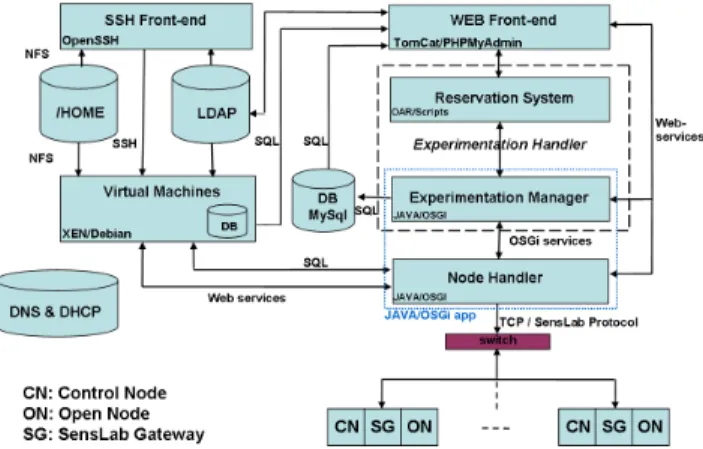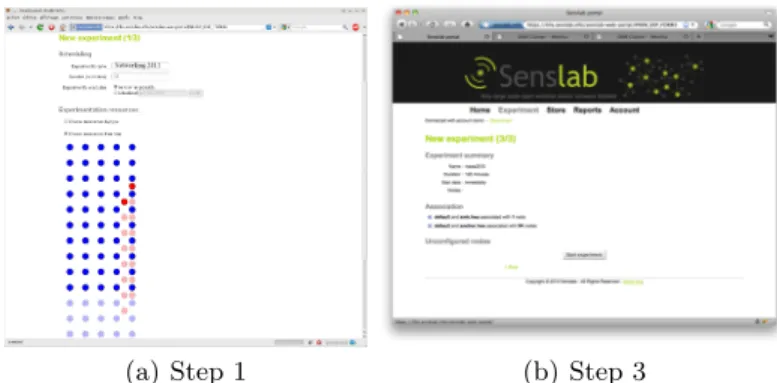Using SensLAB as a First Class Scienti c Tool for Large Scale Wireless Sensor Network Experiments
Texte intégral
Figure




Documents relatifs
In the article a new method for relative location estimation of mobile nodes in wireless sensor networks based on IEEE 802.15.4 standard has been proposed.. This approach uses link
The first wireless repeater is connected to the central server using standard interfaces (for example, a virtual com-port over the USB interface). An exemplary network
The sensors will transmit their information accord- ing to a many-to-one traffic pattern using a multihop scheme. Moreover, the length of every corona can be varied. For each zone
In this section, we study the coverage and detectability of large scale random sensor networks, where sensors are randomly distributed in a vast geographical area.. In this case,
Source nodes, which are responsible for collecting data, can either locally store the data or transmit them to the sink, a powerful node con- nected to the external world..
• Transforming functional, quality and limiting product requirements into re- quirements for the specific systems that play a role in the solution, where assumptions made in
There are few related examples which use similar bottom-up approach and comparison with the simulation of the computer-aided model [10], to visualize the overall consumption
